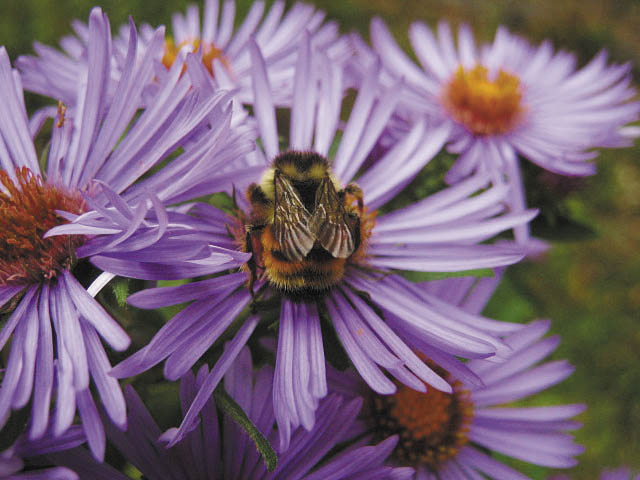The youth culture, I’m afraid, has left me behind.
Not that I didn’t practice it hard myself. Thirty years ago I bounced around — indelicately, as it were — on dance floors and wailed on electric guitars for dozens, sometimes hundreds of better bouncers than me, scoffed at organized religion, fell hard for every girl who smiled at me and disdained small birds. Like every other kid who ever lived, I was a May-June slam-dance summer riot creature with burgeonous wild-madder energy.
Slowly I wised up. Or something. Unfortunately, wising up is a drawback here in the 21st century because we are obsessed with spring. If we weren’t, the Viagra-Cialis industry would not do as well as it does. To the youth go the spoils. After that it’s all downhill.
If you let it, I mean. Take the flora along my driveway, for example. In May and June comes the youth explosion. Starflowers, hawkweeds, raspberry, bluets, violets, ground ivy, wild roses, chokecherry, shadbush and crabapple blossoms, red osier dogwood umbels, little Canada mayflowers under the trees, wild strawberry, yarrow, rough-fruited cinquefoil (more perfect yellow petals do not exist in nature), wood sorrel, speedwell, and ineradicable outbreaks of dandelion.
About the beginning of July everything seems to lay back a moment, as if spent. Then it reconstitutes when the wild carrot, hemlock parsleys (or caraway, or whatever those white-crowned flowers by the mailbox are), evening primrose, nightshade and hawkweeds kick into rhythm. By August and September the youth movement is gone and we stop thinking of flowers and start noticing fallen leaves. Beautiful, but smelling of winter. Here in the Western world we do not like to be reminded of winter, its unstoppability.
But hold on.
“Objects are concealed from our view, not so much because they are out of the course of our visual ray as because we do not bring our minds to bear on them,” Thoreau, a man of no small wisdom it seems to me, observed of autumn.
Is there life after youth?
As late as the first week of October, the wall hawkweed, while not exactly in bunches, is nevertheless scattered all over the lawn. Clusters of New England asters, 3 feet high with gorgeous purple rays, grow along the driveway right where the cinquefoil appeared in June. Near the road among the defiant bands of hemlock parsleys (or whatever they are) are evening primroses 4 feet high with rich, bright-yellow unfurlings. There’s late Queen Anne’s lace, the last of the fading goldenrod. Some kind of skullcap with beechlike leaves and tube-shaped violet flowers grows right near the gravel. Down the embankment, clutches of pearly everlasting. Beside the woodpile, butter-and-eggs toadflax, groves of tiny euphrasia, heal-alls looking deep-purple healthier than they did in July, and in the grass some little stray wood sorrel, late bloomers.
This is not the welterous fantasy of May and its single-minded reproductive roar. But it’s a kind of fecundity that sees past its own growth and even, I have to say, beyond its own winter. There is a tiny flower called shepherd’s purse, with little heart-shaped pods, that outlasts snowfalls too thin to survive the remnants of the sun and thrive well into November and even December.
In the house, my old Gibson acoustic guitar sits alertly on its stand, ready to hand when the blues or the urge for goin’ strike, stuff the kids don’t recognize. My touch, though unprofessional, is defter than it was on stage at the Free Street Pub 10,000 springs ago. The chickadees bouncing around the bird feeder make me laugh out loud, and my wife, beyond competing with the cinquefoil, I fall for every time she walks through the kitchen.
Dana Wilde lives in Troy. His writings on the Maine woods are collected in “The Other End of the Driveway,” available from Booklocker.com. Backyard Naturalist appears the second and fourth Thursdays each month. You can contact him at naturalist@dwildepress.net.
Send questions/comments to the editors.





Comments are no longer available on this story